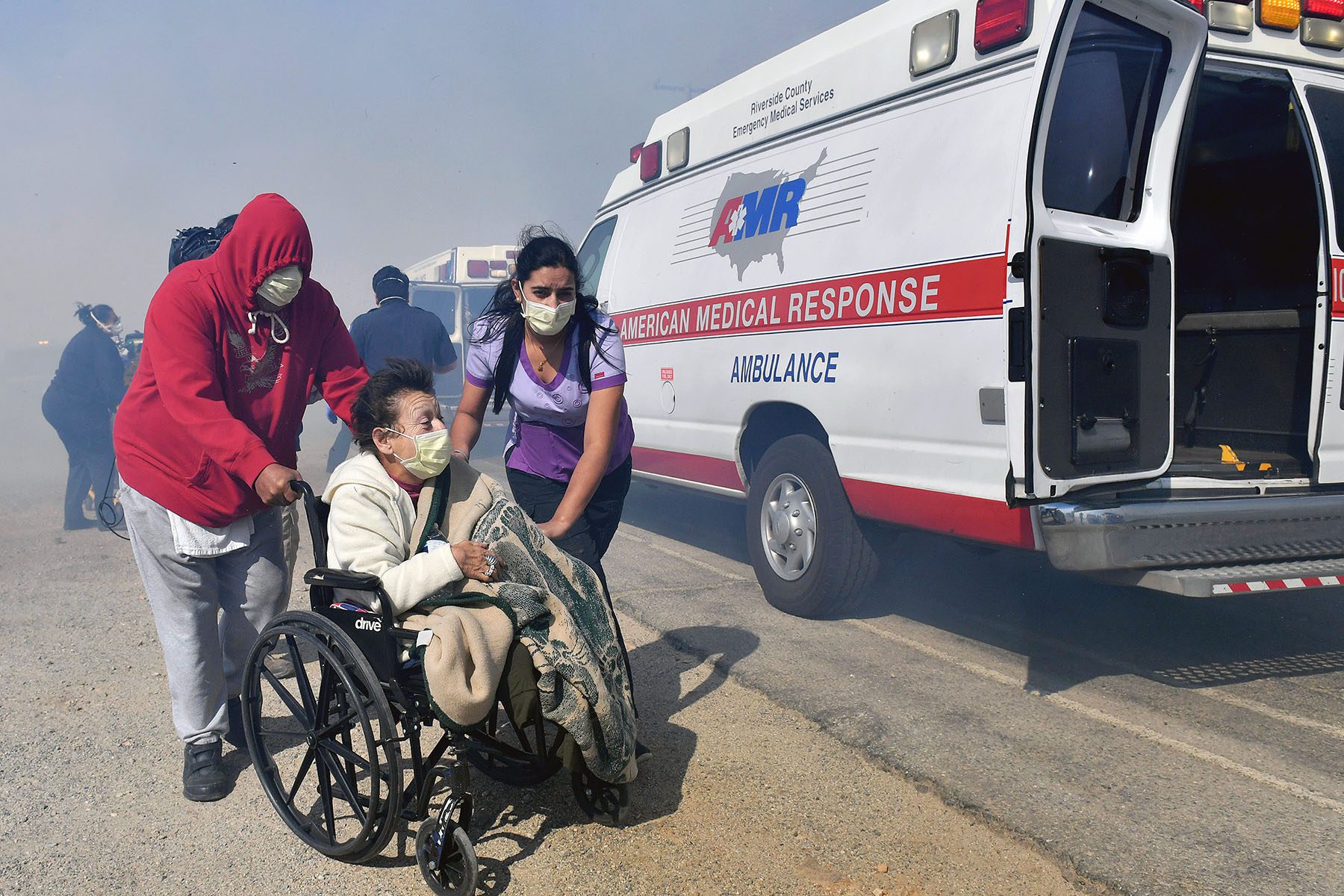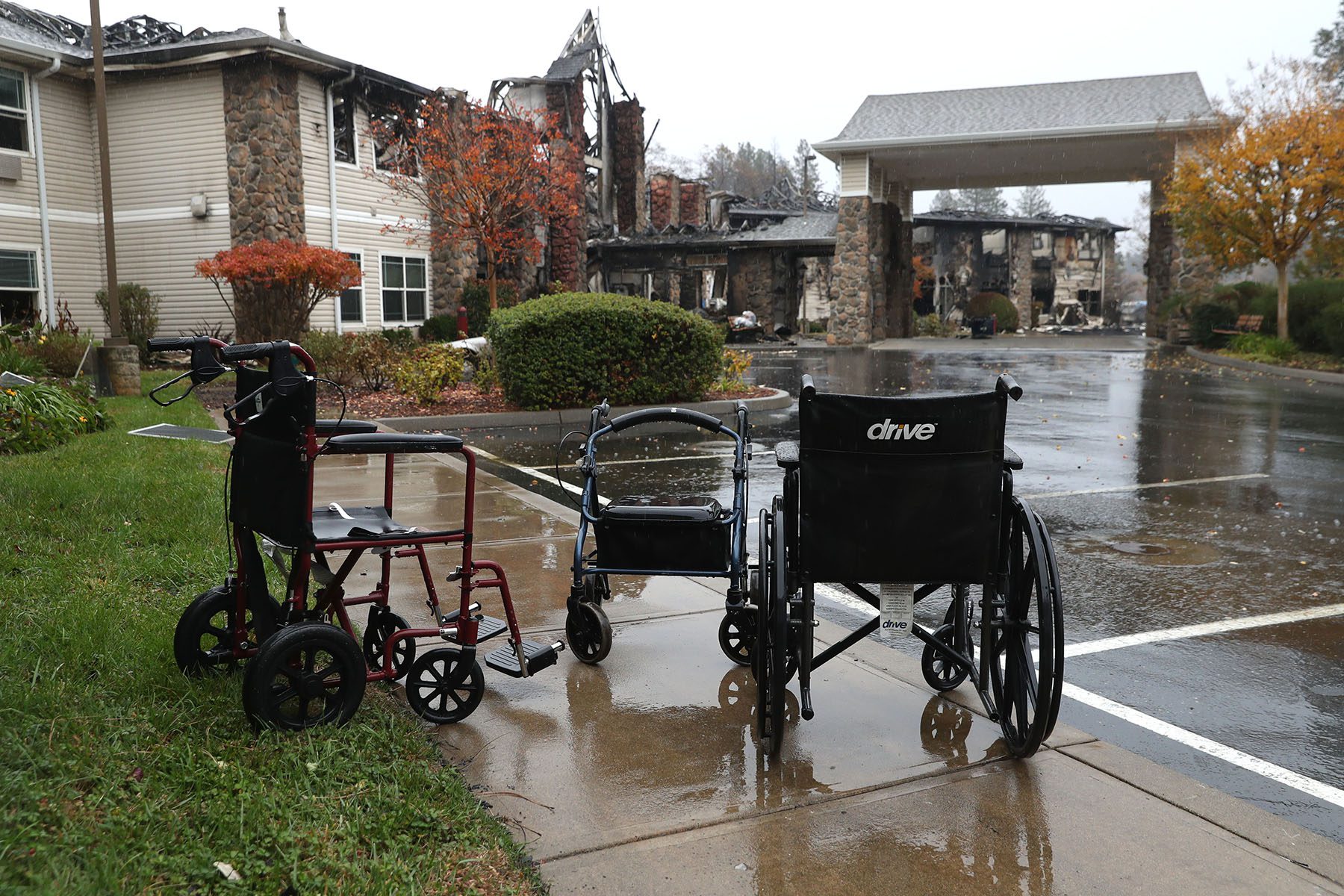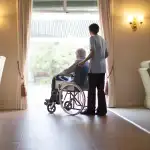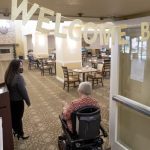*Correction appended.
A few years ago, Marquisa Jackson, a certified nurse assistant, was faced with an emergency: The power went out at the Highland, California, mental health facility where she worked. It was a sweltering summer day, and the building was quickly getting too hot for patients.
“At first I was a little panicky,” she said. “How are we going to take them outside and make it better if it’s even hotter outside?”
But with the temperatures climbing to unsafe levels inside the facility, getting patients out was her only option. She and two other nurse assistants, each in charge of their own group of residents, evacuated the building. They moved them into the shade, providing cooling towels, water and popsicles until the power was restored a few hours later.
Care workers like Jackson have increasingly found themselves serving as first responders, keeping their clients alive during dangerous situations as climate change causes extreme heat and other disasters to become more frequent — and severe. In California, a new program aims to educate workers like Jackson on how to better prepare for these emergencies.
“They become the connection point for fire and police during wildfires and [power] outages because they know the conditions of people who are disabled, who are immobile,” said Kim Evon, executive vice president of the Service Employees International Union Local 2015, which represents over 400,000 care workers, including Jackson.
The people care workers help on a daily basis — the elderly and people with disabilities — are more susceptible to harm during a disaster. In California, extreme heat days, when air conditioners blast and electricity demands skyrocket are becoming more frequent and have led to an uptick in rolling blackouts and unplanned outages. For older people, who have a harder time regulating their body temperature, this can be deadly.
Last year, The Los Angeles Times published an investigation finding that approximately 3,900 people had died from heat-related causes in the last decade in the state. Deaths aren’t just associated with blackouts though. A large percentage of the elderly population is socially and economically vulnerable. Living in isolation and on fixed incomes, people opt out of using their air conditioning in an attempt to keep costs down.
And the U.S. population is aging at an unprecedented rate: By 2050, approximately 20 percent of people will be over the age of 65.
Other climate-caused disasters, like the state’s worsening wildfire season, disproportionately impact the populations that care workers serve. According to a recent study published in the International Journal of Environmental Research and Public Health, it is the elderly and low-income who live in census tracts that were more vulnerable to wildfires in California. Everything from disrupted access to medication, needing electricity for life-supporting machines and immobility makes this population vulnerable in times of crisis.
The care workforce, which is composed largely of women of color and immigrants, are keeping these communities safe, Evon said. “Our care providers … are acting as first responders more and more, but in a different capacity around these climate-driven crises,’” she said.
Now a new pilot program, the Caregiver Resiliency Teams Project, aims to fill a skills gap for care workers in the face of multiplying disasters. The work, which is the first of its kind in the nation, was funded by a $1.07 million grant from the California Workforce Development Board and launched in collaboration with SEIU Local 2015 and the nonprofit Center for Caregiver Advancement.
“What we saw over the last several years … are the roles that caregivers had been forced to play by the nature of their work and the love that they have for their consumers and their residents,” said Corrine Eldridge, executive director of the center. They were working as first responders, but “what we realized was that there was no training for this, right? … So there was a skill gap there.”
Over 130 nurse aids and home care workers attended the first six-week Zoom training, which launched in March. It covered everything from environmental justice to emergency preparedness planning and advice on how to help clients with post-disaster trauma. A second training will begin in July.

Attendees run through a series of scenarios to prepare for evacuating their residents, said Eldridge. People who have disabilities that might make it hard to evacuate, are oftentimes left out of emergency planning, she said. “So, if you’re caring for a consumer who may be the blind or is not easily mobile, then how do you plan for those things in advance?”
Jackson, who is a home care worker, said the sessions helped her imagine what she might do if she is working alone during an evacuation. “We learned how to carry somebody that’s heavy [using a blanket], which is really important to me, because a lot of times when I’m working at these people’s houses it’s just me,” she said.
The training also provided her with an emergency preparedness kit, which included a stash of water and food, that she keeps at home under her bed. In this way, the training served a dual purpose, of also helping care workers, many who come from communities that are hardest hit by climate change.
“The program is important, because it’s actually targeting the providers who live and work in communities that are more susceptible to these extreme weather events,” Evon said. The alliance reached out to workers who lived in census tracts with high air pollution.
But providing training is just one part of the equation. The national SEIU organization has pushed for care workers to receive greater recognition and compensation for their role in caring for vulnerable populations in the climate crisis.
Care work pays on average about $13 an hour and often doesn’t include basic benefits like health care. Evon said the union is advocating for workers at the local and state level to make $20 an hour at minimum as their responsibilities on the frontlines grow.
“Everyone will tell you how important they are, and how they serve our communities and that they’re frontline heroes,” Evon said. “They receive low wages and poor benefits. … They don’t have a retirement. They get three sick days. Which we had to fight for legislatively to get that attributed to them.”
As a result, the care workforce is being depleted when it is needed most. Half of nursing home workers polled by the SEIU said they planned to leave the industry next year if they don’t receive better pay and benefits; 20 percent of home care workers said the same, Evon said.
The pilot program in California also helps fill a development gap that could keep people in the profession.
“There currently aren’t a lot of opportunities for career advancement and skills training and professional development in those jobs,” said Zach Lou, coalition manager of the California Green New Deal Coalition and former member of the California Workforce Development Board, who worked with SEIU to develop the pilot program.
The pandemic helped illustrate how important this workforce is in times of emergency, Lou said. It also exposed how little care workers are integrated into disaster response planning, despite the role they played in keeping people alive.
“There was a lot of lack of coordination at the local city, county, regional, state level, and working with caregivers,” he said.
Jackson, who loves her job, saw it as her duty to show up, even when COVID was lurking in the facility. “There would be times when it was only me at work, and a lot of the nurses called off,” she said. “So that made me feel like I was important because it’s like, I came here to care for these people.”
Correction: An earlier version of this article misstated the number of care workers represented by Service Employees International Union Local 2015. We regret the error.








